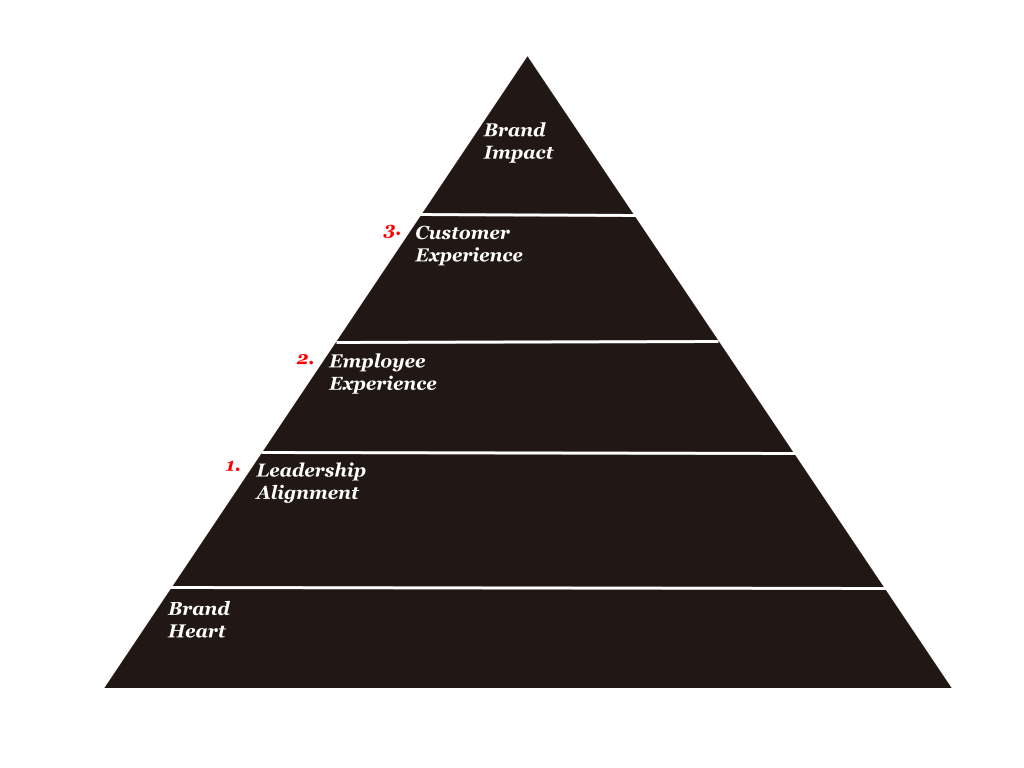Brand Culture: Expanding Who You Are
Through social platforms, consumers can interact with brands without having to purchase a single product. Through those same platforms, consumers are increasingly sharing opinions and holding brands accountable. 📲 📣
As Debbie Millman once said, brand at its best is a manifestation of the human spirit. Brand has always been aspirational – eliciting feelings meant to drive consumers to action, solving everyday problems, building connections, pushing boundaries, and so on. However, today, when the expectation of who a brand is falls short of what is experienced, consumers are let down, and consequently, brands are held accountable.
It’s no longer enough to labor over and craft a purpose statement. No matter how much you believe in it, if you’re not practicing it, there’s a gap between what is expressed and what is experienced.
Today, brands are being called to do more than just talk. It’s time to walk the walk – your why.
Susan David, Ph.D., defines ‘walking your why’ as the process of moving towards your values. We think of this as behavior that brings you closer to alignment with your Brand Heart.
Once you’ve worked through discovering and articulating who you are. The real work begins – practicing alignment.
What Brand Culture Is
At Hoot Design Company, our Brand Culture sets out to design a culture that is authentic to who your brand is. You can think of this as taking your Brand Heart and transforming it into meaningful action. It takes the guesswork out of practicing alignment by clearly defining what alignment looks like in action.
Brand Culture invites all the members of your organization to contribute towards building an environment where everyone feels empowered and accountable to act in a way that follows the culture you seek to foster.
Why Brand Culture Matters
When we think about culture, we often think about the 'vibe' of the office.
That vibe is created by the behaviors we display towards one another and ourselves. And when you go a layer deeper and look at what drives those behaviors, you find values. But as we have learned, what one person understands the value of joy (or insert one of your company values) to be is often entirely different from another teammate's view of joy.
So while it is important (and challenging) to name these values, it is more important to define these values in action. When your team understands the behaviors that support your Brand Heart, they can truly embody your brand–minimizing the gap between what is expressed and what is experienced.
And in the never-ending game of business, to-do lists won’t be going away anytime soon. So while you can’t always control your to-do lists, you can control how you go about your to-do list. And when your team can form habits that support the culture you want to build, these actions compound into brand impact, which we define as on-brand results.
Who Brand Culture Is For
Brand Culture is for the gritty. It’s hard work that has no finish line.
If you find yourself resonating with any of the below categories, we wholeheartedly believe that Brand Culture might be the next best step for your brand:
Purpose-driven teams
Teams ready to embrace change
Leaders wanting to give back to their teams
Brands looking for greater employee engagement, customer engagement, and ROI
Any team that prioritizes trust, creativity, connection, and innovation
Brands looking for greater impact
Brands ready for the next level
How We Do Brand Culture
In the brand development process, we set out on a path toward authentic brand consistency. We do this through conscious branding, which is the act in which both our team and the client practice self-awareness of the culture we’re designing.
This third step in our branding process is about expanding who you are–inviting your team to take part in building a brand with a long-lasting impact.
Brand Culture has three components.
Leadership Alignment
Employee Experience
Customer Experience
Leadership Alignment
Leadership Alignment includes designing a leadership experience where there is a shared understanding of objectives. Leaders agree on what is needed to reach these objectives while working to empower and hold one another accountable.
Leadership Alignment has four components.
Align: how leaders connect with your company’s Brand Heart
Define: defining what it means to lead and expanding it into action
Commit: forming an understanding of how teams contribute to brand impact and a commitment to owning that contribution
Develop: clarity around strengths and growth areas with a plan to support greater contribution from teams
Employee Experience
The Employee Experience is the journey your employee takes in your organization. It includes everything that happens along the employee life cycle, specifically the experiences that involve an employee's role, workspace, leadership, and wellbeing.
Our Employer Brand is centered around designing an employee experience that builds and maintains employee alignment. It is a human-centered, purpose-driven approach to engage employees.
Employer Brand has four components.
Positioning: where you sit in the minds of your team members and the value you offer them
Values: how your team works – expanded into action
Architecture: systems and structures that empower your team
Language: the stories told and vocabulary you use to create shared understanding
Customer Experience
Customer Experience seeks to minimize the gap between what is expressed and what is experienced. It audits the buyer’s journey and identifies key opportunities to connect with your customers in ways that resonate with them. We identify what reaching customers’ expectations looks like, as well as, what it takes to exceed their expectations.
Beyond Brand Culture
When your team is producing on-brand outcomes, you create a culture where there is greater brand impact, equity, and loyalty.
Brand Heart: discovering who you are ✔
Brand Identity: leveraging who you are ✔
Brand Culture: expanding who you are ✔
Brand Experience: sharing who you are
Ready to take your brand to the next level?
Get in touch with our team to begin your culture renovation.


